The 4th
LaureateSculpture
Anthony Caro
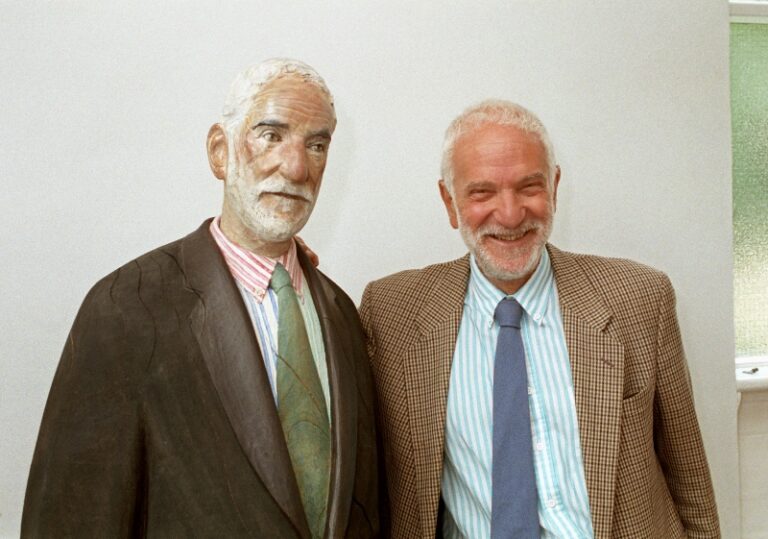
Anthony Caro’s meeting with the champion of abstract expressionism,Clement Greenberg,heralded the progression from his early expressive figuration to the abstract constructed sculpture for which he is renowned. Working directly in metal that was then painted in single strong colours,Caro took British sculpture in a direction almost wholly counter to that of Henry Moore,whom he had assisted as a student. Placing his sculptures directly on the ground,he opened up the relationships between architecture and sculpture,showing influences from Le Corbusier,then creating spaces which could be entered (saying ‘Why should sculpture be something to be outside of?’). Caro is Britain’s foremost sculptor,producing work of awesome power and presence on a massive scale. His achievements in the area of uniting sculpture and architecture are unrivalled.
Biography
For a long period in the 1960s and 1970s it seemed that all innovative British sculpture was coming out of St Martin’s art school in London. Clement Greenberg,the leading American critic,described Anthony Caro in 1967 as ‘the Moses of English sculpture’ and declared that it was up to the work of his students – the ‘new English Sculptors’ – ‘to save the avant-garde’. Caro had taught at St Martin’s for 20 years and during the last decade of his tenure (he left in 1973) he exerted an immense impact on the stylistic development of British sculpture as a whole.
It was as a result of Caro’s meeting with Greenberg in London in 1959 that his own work changed radically from the figurative expressionism of Woman Waking Up,1956,comparable to the work of his contemporaries Elisabeth Frink and Bernard Meadows,to the constructed sculpture for which he has since become known,such as Early One Morning,1962. A charismatic theorist,Greenberg had been one of the great propagandists for American abstract expressionism,and was now interested in what could or might happen to large-scale abstract work in general,in opposition to the newly triumphant pop art. In the same year Caro went to the United States and there,through Greenberg,first made the acquaintance of the American sculptor David Smith,who introduced him to the idea of working directly in metal. The following year Caro made his first abstract sculp-tures,such as Twenty-Four Hours,which were partly inspired by a visit to Carnac in Brittany where he was deeply impressed by the prehistoric menhirs.
Caro returned to America in 1963 to teach at Bennington College in Vermont,and remained there for a year,during which time he renewed his friendship with David Smith and also with other American artists in the group supported by Greenberg,among them the painters Jules Olitski and Kenneth Noland. Though David Smith’s work undoubtedly influenced him at this time,there was also an element of rivalry. Summing up the situation later,Caro said candidly: ‘I wanted to beat him’. This rivalry had one curious result. After Smith’s death in a motor accident in 1965,Caro bought the American sculptor’s remaining stock of materials and had it shipped to England to use for his own purposes. His most Smith-like sculptures date from this time,rather than earlier.
Quite apart from his rivalry with Smith,it could also be claimed that Caro’s sculpture amounts to a complete rejection of the achievement of Henry Moore,for whom Caro had been a part time assistant in 1951–52 while still a student at the Royal Academy Schools. The originality of Caro’s art during the sixties and seventies sprang in part from his abandonment of the conventional sculptural base. From the early sixties his sculptures stand directly on the ground and their emphasis is often horizontal rather than vertical. Another mark of Caro’s work at this period is not merely its transparency but its apparent physical lightness,a characteristic that reaches a culmination with the ‘Emma’ group of sculptures,1977–78,named not after a woman but after Emma Lake in Saskatchewan where they were made. Another radically untraditional aspect of Caro’s early mature work is that it is often painted in bright colours. In part this seems to have been due to the sculptor’s admiration for the work of Matisse and especially for the vividly hued paintings Matisse made in Morocco. This interest in aspects of early modernist painting would eventually broaden and lead Caro to make sculpture which paraphrased well-known artworks; examples of this are his abstract three-dimensional versions of Manet’s theme Le Déjeuner sur l’Herbe,1989; and After Olympia,1987,a full-scale paraphrase of one of the pediments of the Temple of Zeus at Olympia. In the late 1970s Caro’s work began to display a new interest in vessel forms – a development that had been stimulated by an invitation from the University of Syracuse,NY,to work in their ceramics department. This fascination with vessel forms also led him to reconsider the possibilities offered by casting metal,in addition to welding it – an evolution that can be best seen in works such as the 1980 sculpture Half Moon.
Caro also felt an increasing preoccupation with the relationship between sculpture and architecture. This was a revival of ideas which he had worked with at the beginning of his career,when the forms of his figurative expressionist sculptures had been influenced by those of Le Corbusier’s late buildings,particularly the chapel at Ronchamp. In 1985 this preoccupation was reinforced by a belated first visit to Greece. His Child’s Tower Room,1983–84,is one of a series of attempts to make a sculpture whose forms can be experienced from within the piece as well as from without. Caro has said in connection with this development in his work: ‘Why should sculpture be something to be outside of? Isn’t it possible that you can turn it inside out,like a glove?’ Some very large recent works,such as a design for a lakeside summerhouse,have actually seemed to cross over the border between sculpture and architecture.
Visiting Greece also seems to have reinforced Caro’s interest in Ancient Greek civilisation – its literature as well as its architecture and art. In 1994 he went on to create The Trojan War,a series of sculptures inspired by the Iliad. These pieces represent a kind of return to his expressionist beginnings. Made of mixed material – clay and wood as well as metal – they are semi-figurative. Thanatos (Death),for example,is crowned by a recognisable skull. This group of works,unashamedly literary in content,firmly returns modern sculpture to territory which it had apparently abandoned for good at the beginning of the twentieth century.
Edward Lucie-Smith
Chronology
Emma Series
-
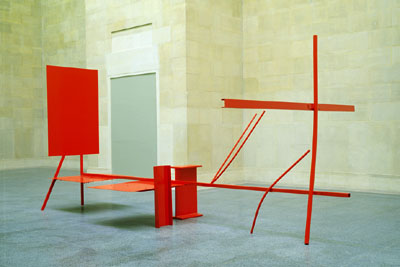
Early One Morning
-
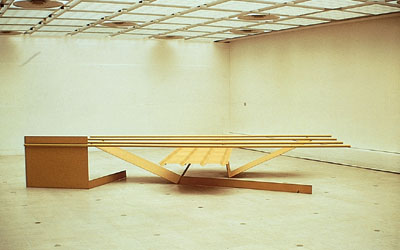
Prairie
-
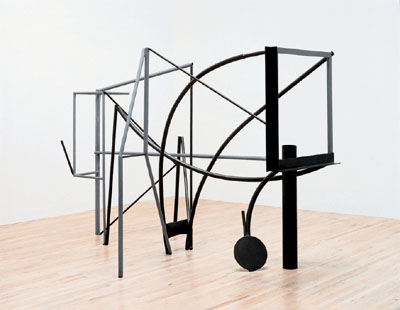
Emma Dipper
-
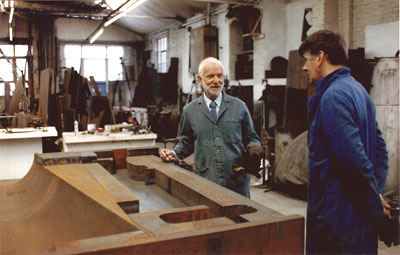
Caro in his studio
-

At his Studio

